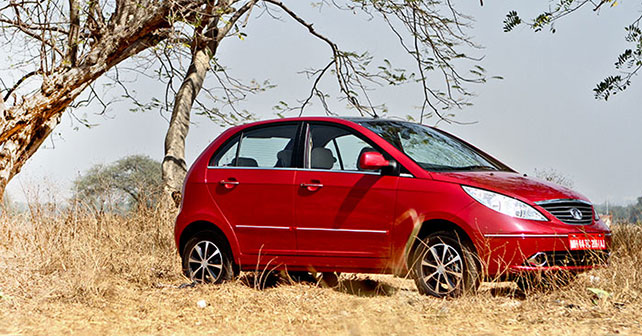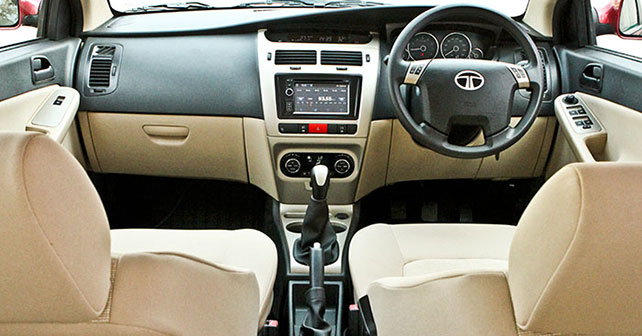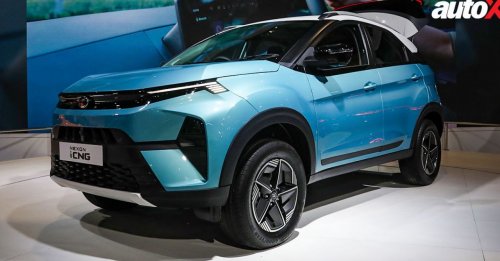Tata Motors does a go-fast Indica, which is all well and good, but what it ought to do is go beyond the Indica!
I’ll be honest – I’ve always had a slight liking for the Indica. It’s a statement that many would frown over, but let me explain. I completely buy the point that the Indica has never really been a great automobile, and has had refinement and quality issues. Even now, after about 15 years, the Indica isn’t up to scratch when you compare it against rivals from Maruti or Hyundai. But still, I have this emotional attachment to the product. And, in Tata’s defence, the engineers at its factory have been trying desperately to improve the product over time, and the Tata Vista reflects the fruits of their labour – it’s really not a bad car at all.
When the first Indica rolled off the factory, it was an emotional moment for the whole nation. It seemed to tick all the right boxes – almost. Back then, it looked sensational and the Italian design firms (Institute of Development in Automotive Engineering) idea of a modern hatchback for the Indian market was really well accepted. The 1.4 litre Peugeot derived petrol engine was appreciated for its performance, and the diesel was high on efficiency. But the Indica lacked outright finesse, and the fit-and-finish was far from being impressive. Despite its flaws, though, the Indica was a market success.
The most recent Indica to hit the streets, the D90, features a 90bhp diesel engine – as the nomenclature suggest. It’s the same 1.3 litre, Fiat motor that does duty on a number of other cars like the SX4, Ertiga, Linea, Punto’s 90bhp variant, and, Tata’s own, Manza. Tata has tried really hard with the D90, and it shows. The feature-list runs all the way down to the bottom of the page – it’s mostly routine stuff like electrically adjustable rear view mirrors, chrome strips here-and-there, and ‘cushioned door pads with fabric inserts.’ Oh yes, I want that – terribly! There are, however, a couple of things on the top variant that you’ll definitely acknowledge – an all-black roof and the TFT touch screen that doubles up as a navigation system.
The Vista D90, according to the official presentation, is aimed at young and adventurous chaps. Great! But I do have a bit of a beef about how they’re trying to play the game.
You see, I happen to be the recipient of an official document, which states that I’m an MBA graduate. And this means that I ought to know a thing or two about marketing too. And I think I do, weirdly enough. When a company has a clear demographic in mind for a specific product, it should stick to targeting that demographic, and must do everything it can to lure those customers. For Tata, the D90 is, in essence, a niche product that they are aiming at a defined demographic of young folks who presumably want to stand out from the crowd. The D90 is the more powerful, sporty variant of the Indica, and the looks should shout that out immediately. Tata does offer a body kit – it’s aggressive enough to separate the D90 from the crop of other Indica’s, but it’s an option somewhere upwards of 30 grand!
Listen marketing geniuses, if you’re targeting the wild and adventurous youth, you have to create a sub brand for the D90 in itself. If they’re going to buy an Indica for ‘performance’ over the Swift, it means they want the world to know what their priorities are. Moreover, paying for the more powerful version and yet getting the looks of the ordinary 74bhp Indica doesn’t seem like it would sit well with these buyers. So, there’s no point selling the D90 without that body kit and diluting the brand image in the process. Just slap the kit on as a mandatory item and keep the novelty of the D90 intact, please!
As for the product itself – though the 200Nm is spread from 1750 to 3000rpm, the D90 feels quite gutless under 2200rpm. It’s only beyond this point that the thrust can be properly felt, and the 89bhp takes over from there to lend a very strong mid-range to the engine. It’s a variable inlet geometry turbo, but somehow, doesn’t feel as lively as it does in even the Ertiga – and that’s a minivan! So, for regular city driving, I’d feel happier with the 74bhp model (it has just 10Nm less anyway) and save about 50 grand of my hard-earned money. However, the ride is still quite good and the grip from the tyres was also impressive. The D90 does some exhibit body roll, but it’s not something that will make you stop breathing when you’re going around a fast bend on a mountain road. I’d like more feedback from the steering and brake pedal though.
It’s not a bad effort really, but the D90 just isn’t quite sporty enough. And to attract enthusiasts, Tata needs to go beyond the Indica platform and brand name. They need to stop playing the marketing game, and do things from the heart – like Mr. Ratan Tata did. They should do something like the Aria coupe / sportscar concept that Tata revealed in 2000. I certainly hope they do, and sooner rather than later.





























Write your Comment